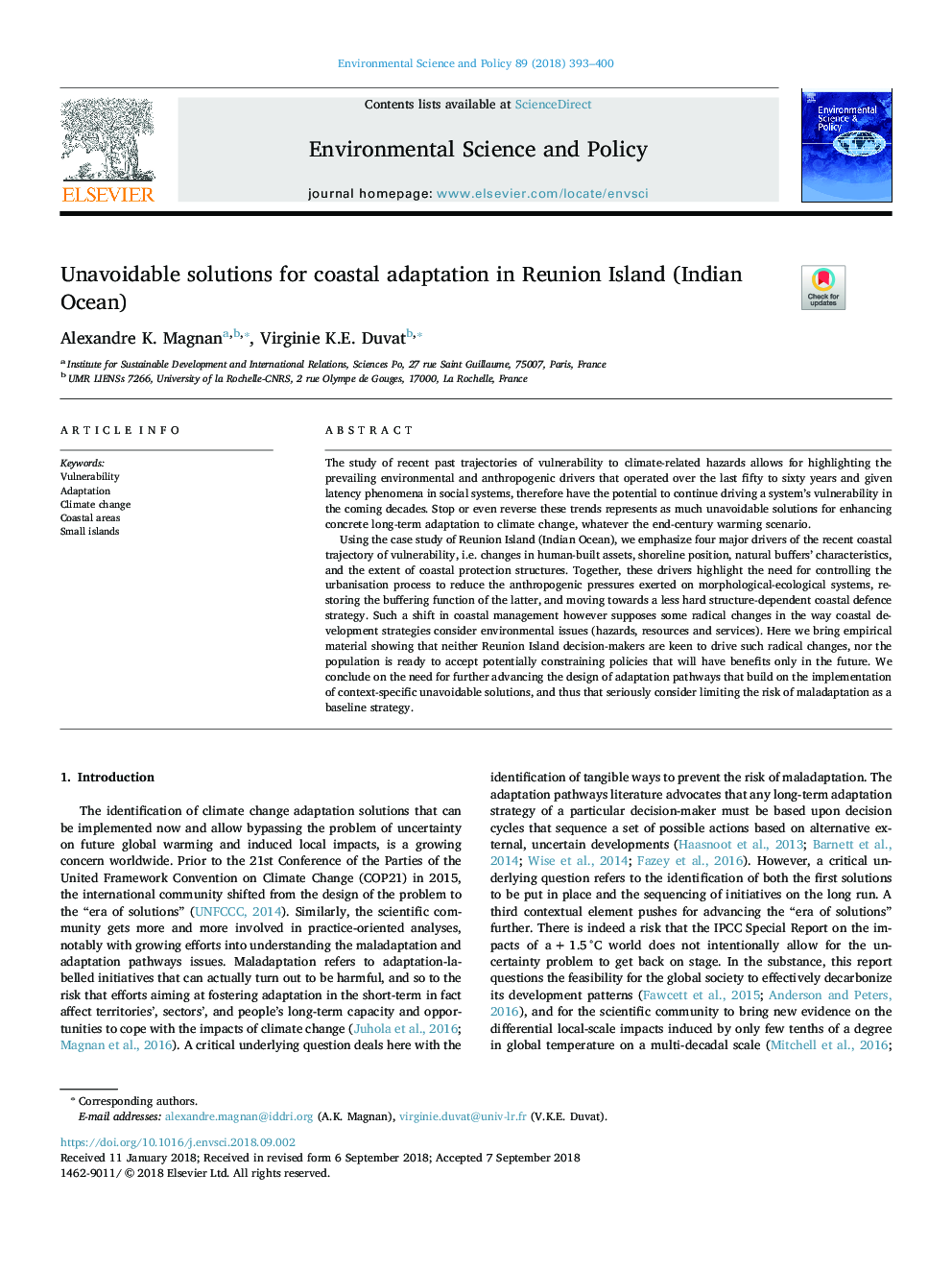| Article ID | Journal | Published Year | Pages | File Type |
|---|---|---|---|---|
| 11005284 | Environmental Science & Policy | 2018 | 8 Pages |
Abstract
Using the case study of Reunion Island (Indian Ocean), we emphasize four major drivers of the recent coastal trajectory of vulnerability, i.e. changes in human-built assets, shoreline position, natural buffers' characteristics, and the extent of coastal protection structures. Together, these drivers highlight the need for controlling the urbanisation process to reduce the anthropogenic pressures exerted on morphological-ecological systems, restoring the buffering function of the latter, and moving towards a less hard structure-dependent coastal defence strategy. Such a shift in coastal management however supposes some radical changes in the way coastal development strategies consider environmental issues (hazards, resources and services). Here we bring empirical material showing that neither Reunion Island decision-makers are keen to drive such radical changes, nor the population is ready to accept potentially constraining policies that will have benefits only in the future. We conclude on the need for further advancing the design of adaptation pathways that build on the implementation of context-specific unavoidable solutions, and thus that seriously consider limiting the risk of maladaptation as a baseline strategy.
Related Topics
Physical Sciences and Engineering
Energy
Renewable Energy, Sustainability and the Environment
Authors
Alexandre K. Magnan, Virginie K.E. Duvat,
